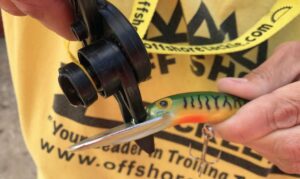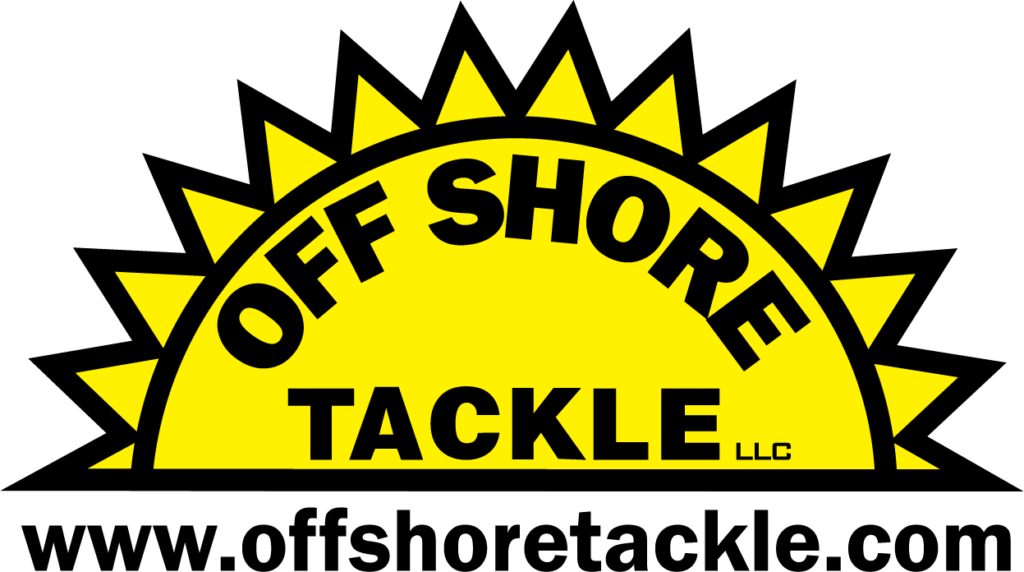BY MARK ROMANACK
Every crankbait should come out of the package tuned and ready to fish. While modern crankbaits are far more likely to be tuned in the package than their predecessors, at some point every crankbait is going to need a tune up.
The biggest culprit for why crankbaits routinely get out of tune can be traced to baits that have actually been catching fish. A fish struggling in the net can put considerable force on a crankbait. Just as damaging, twisting and or jerking aggressively to remove a hook from the fish’s mouth can bend the pull point of the lure.
The pull point is the place the line attaches to the crankbait. Bending this small wire loop even minutely will cause a lure that is running straight in the water to run left or right of center.

A crankbait that is out of tune will not run straight in the water. When this occurs, the bait is not achieving its natural diving depth or providing it’s designed action. In short, a bait that was working just fine can easily get knocked out of tune and suddenly that bait goes cold from a fish catching perspective.
Thankfully, with a few minutes attention, any crankbait can be hand tuned to run perfectly again. The process of tuning a crankbait is a trial and error event. The process of tuning a bait involves casting the bait and retrieving it or dragging the bait out to the side of the boat. The idea is to observe the bait to see if it is pulling straight in the water or flaring to the left or right of center. If the bait is running left of center, bending the pull point wire slightly to the right can correct this situation. The reverse is true for baits running to the right side of center.
The keys to tuning a crankbait involve making very small adjustments to the pull point. A little goes a long way and beginners tend to bend the pull point too much causing a bait that may have been running right of center to suddenly start running left of center.
Bending the pull point and then checking to see how the adjustment impacted on the bait is the trial and error process involved in tuning a crankbait. At times a crankbait can be tricky to tune. This often happens after a bait has been tuned many times and the wire pull point starts to become soft from repeated bending. This is precisely why it’s important to make very small adjustments to the wire pull point. Bending the pull point too aggressively or too often can permanently damage the crankbait beyond repair.
While hard use is usually the reason a crankbait is out of tune, it’s common for a bait to come out of the package running left or right of center. This occurs because the wire pull point was not perfectly aligned in the mold when the crankbait was cast.
Thankfully correcting this situation is a simple matter of tweaking the pull point wire and checking the results. It usually takes two or three adjustments to tune a crankbait to run straight, but sometimes a bait can take a lot more effort to achieve a satisfactory tune. Certain brands of lures are notorious for being difficult to tune. This is a quality control issue that can be traced back to the way the bait was manufactured in the first place. Attention to detail is critical in making sure the pull point wire is mounted precisely in the right location when the lure is molded.
Some baits are so hard to tune, many anglers simply avoid fishing them! No one wants to spend their whole day tuning lures that should be running true out of the package in the first place.
TUNING WHILE TROLLING
Most trollers are going to tune their lures while they are on the water fishing. A bait can be tuned while trolling, but there are a few things to be cautious about. Avoid trying to tune a crankbait by letting the bait straight out the back of the boat. As the boat moves it displaces water creating a kind of back eddy directly behind the boat. This disturbed water doesn’t provide a clean and steady flow of water flowing past the bait, making it very tricky to see if the lure is precisely tuned or not.
Instead, consider moving to the front of the boat and pull the crankbait along side the boat where the water has not been as dramatically displaced. Sweeping the rod tip forward will speed up the bait and showcase if the lure is running left or right of center or diving perfectly straight in the water.
CASTING TO TUNE
A good argument can be made that the best way to tune a crankbait is casting the bait while the boat is sitting still or drifting. Cast the bait a short distance, point the rod tip at the bait and lower the rod tip to the water surface. Now reel the bait back as fast as possible. A fast retrieve will showcase any imperfections in how well the bait is tuned, making it easy to see if the bait is running right or left of center.
Make the necessary adjustment to the pull point and then make another cast to repeat the process. Usually two or three casts is all it takes to get the bait running perfectly straight in the water. This is how we tune crankbaits for Precision Trolling Data testing because it guarantees that every bait we test will be hyper tuned and running to perfection.
ENTER THE OR40 EZ CRANKBAIT TUNER
In the past, anglers have tuned their crankbaits with a pair of needle nose pliers. The biggest drawbacks of using needle nose pliers are that you can scratch up the bill of the bait and it is very easy to over tune, which can damage the pull point and ruin the bait. A better alternative is to use a device designed especially for tuning crankbaits, the OR40 EZ Crankbait Tuner produced by Off Shore Tackle. The OR40 is an enhanced pair of pliers with one jaw longer than the other. One jaw is placed on the pull point of the lure and the other jaw rested against the edge of the lure’s diving lip.
A slip clutch mechanism is built into the pliers so precise amounts of pressure can be applied to the pull point of the lure time and time again. This pressure is controlled by tightening or loosening a spring built into the tuner. By setting just enough pressure to make a change in the bait it is much more difficult to over tune the bait. The EZ Crankbait Tuner is made out if a high strength plastic that will not damage the bill.
Once the EZ Crankbait Tuner is adjusted properly, baits can be tuned very quickly because each adjustment applies exactly the same amount of pressure to the pull point. Slick. If you haven’t tried the OR40 EZ Crankbait Tuner it’s worth taking a serious look at.
SUMMING IT UP
A properly tuned crankbait will catch more fish than one that is not running straight and true in the water.
Tuning a crankbait can be time consuming and tedious, but it’s a necessary skill for anyone who casts or trolls using diving crankbaits. Taking the time to mastering the skill of tuning crankbaits is the first step in becoming a master at catching fish on these hard baits.


